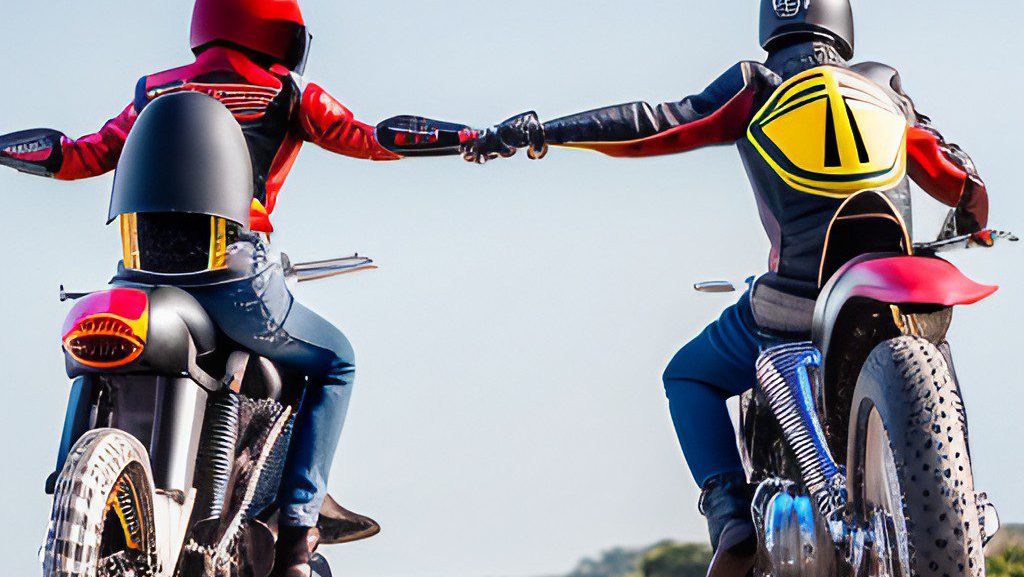Riding in a group can be an exhilarating experience, bringing a sense of camaraderie and unity among motorcyclists. However, it also comes with unique challenges and risks. This blog will provide you with essential safety tips to ensure you enjoy group rides while maintaining safety.
Introduction
Group riding is a common part of the motorcycle community, often enhancing the overall riding experience. However, without proper planning and communication, it can quickly transform into a risky endeavor. This blog aims to equip you with key safety tips for group riding.
Importance of Pre-Ride Meetings
Before setting off, it’s crucial to have a pre-ride meeting. Discuss the route, rest stops, and what to do if someone gets separated from the group. Remember, effective communication is the bedrock of safety during group rides.
Pre-ride meetings serve as an opportunity to share critical information and set expectations to ensure a safe and enjoyable group ride. During this meeting, the group leader should provide a clear and detailed route plan, including designated rest and fuel stops. An agreed-upon riding formation, typically a staggered or single-file formation, should be established based on the road conditions and traffic. Emergency procedures should be discussed, such as how to handle mechanical issues or what to do if a rider gets separated from the group. The group should also agree on a communication system, whether it’s hand signals, intercom, or another method. Additionally, the meeting is an excellent time to remind riders of basic safety rules, such as maintaining a safe distance between each other and not trying to keep up at the expense of safety.
Formation and Spacing
Maintaining a staggered formation can help ensure safety by providing sufficient space for each rider to maneuver and react to road hazards. Be mindful of the 2-second rule, allowing for adequate reaction time.
In a staggered formation, the leader rides on the left side of the lane, while the next rider stays a bit behind on the right, and this pattern continues in the group. This formation allows each rider a safety cushion on both sides, as well as in front and back. It’s important to remember that this formation should be adapted to the road conditions and traffic. On curves, single-file formation is safer, and on highways, a staggered formation works best.
Within the formation, spacing is crucial. Implement the 2-second rule, which recommends that you should be at least two seconds behind the motorcycle directly in front of you. To estimate this, pick a reference point ahead such as a tree, sign, or building. When the motorcyclist ahead passes this point, start counting. If you reach the reference point before you’ve counted to two, you’re following too closely and need to slow down.
Remember, these formations aren’t set in stone. There will be times when you need to adjust your position within the lane to avoid road hazards or to maintain a safe distance from other vehicles. Always be aware of your surroundings, and make changes to your formation and spacing as needed to ensure safety.
Role of Lead and Sweep Riders
The lead rider should be experienced, responsible for navigation and setting the pace. The sweep rider, also experienced, should stay at the end, ensuring no one gets left behind.
The lead rider, or the “point,” plays a crucial role in group rides. This individual needs to be well-versed in the planned route and aware of any potential challenges like tricky turns or road works. As they set the pace for the group, they should be considerate of the group’s least experienced riders, ensuring the speed is comfortable and safe for everyone. They also have the vital task of signaling turns, lane changes, and road hazards to the rest of the group.
The sweep rider, otherwise known as the “tail gunner,” occupies the last position in the group. Like the lead, this should be a seasoned rider, tasked with keeping an eye on the group as a whole and ensuring no one gets left behind. They act as a support system for any riders facing difficulties, be it mechanical issues or fatigue. The sweep rider should also have some basic first aid and mechanical repair knowledge, as they will likely be the first to respond if a rider at the back encounters a problem.
Both the lead and sweep riders should be in constant communication throughout the ride to share updates about the group’s status and any necessary changes in the route or speed.
Use of Signals
Establish hand or foot signals for communication. Common signals include slowing down, stopping, or pointing out obstacles. Clear communication can prevent misunderstandings and accidents.
While intercom systems are a great tool for group communication, there are instances where they may not be feasible or effective. In such cases, hand signals serve as a useful alternative. Here are some commonly used signals that every group rider should be familiar with:
- Slowing Down/Stopping: Extend your left arm straight out and move your hand up and down at the wrist. This indicates that you are slowing down or preparing to stop.
- Hazard in the Roadway: To point out a hazard on the left, point with your left hand. For a hazard on the right, point with your right foot.
- Turning/Changing Lanes: Extend your left arm straight out for a left turn. For a right turn, bend your left arm at a 90-degree angle with your hand pointing up.
Remember, clear and timely communication can prevent misunderstandings and accidents. Ensure all group members understand and are comfortable with the chosen signals before setting off.
Conclusion
Being part of a motorcycle group ride can be a memorable experience, but safety should always come first. By adhering to these tips, you can enjoy the camaraderie of group rides while ensuring everyone’s safety.
Stay tuned for our next blog post, “Motorcycle Safety Courses: Why They’re Worth Your Time,” where we will dive into the benefits of safety courses for motorcyclists.

